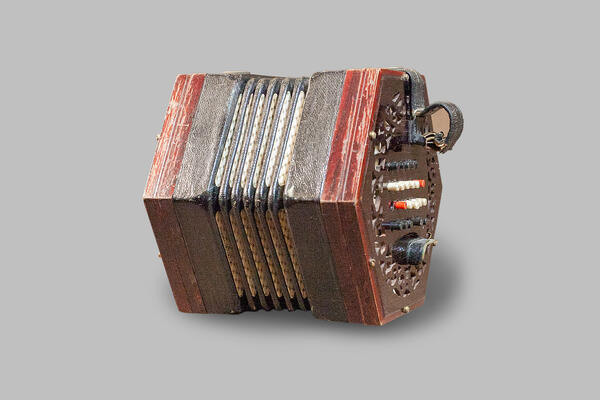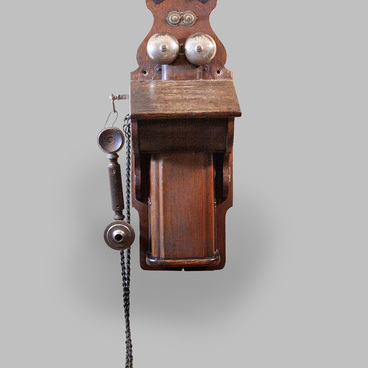A treasured exhibit of the “Vyatka Handicrafts” section is an instrument created by the famous squeezebox craftsman Ivan Fyodorovich Suntsov who designed the Vyatka version of the English concertina. At the 1900 Paris Exhibition, the Vyatka craftsman won praise with his concertina and was awarded the grand prize.
A concertina, or an English concertina, is a free-reed musical instrument with a chromatic scale. It was patented by Charles Wheatstone, an English physicist and inventor of many scientific breakthroughs, in London in 1829. The instrument resembles a harmonica with a hexagonal shape. The concertina is not a large instrument, it has a diagonal of between 15 and 18 centimeters. The sound of the concertina is not particularly strong or full, but it is very gentle and melodious. Unlike the German concertina, the buttons produce the same notes regardless of the changes in the direction of air pressure. The concertina has a span between three and a half and four octaves. The instrument can be used to play classical music, English folk music, sea shanty, Scottish and Irish traditional music.
The instrument became especially popular in Europe and England: in public schools it was used for teaching singing, in churches it replaced the organ, in string orchestras it was used instead of wind instruments. In the 1870s, the instrument was brought to St. Petersburg where it was first used in choral classes at the higher pedagogical courses for women. In the early 1880s, an amateur club of concertina players was organized in St. Petersburg with free concertina courses. However, the instrument never became widespread in Russia.
Ivan Suntsov, a self-taught artisan and a well-known squeezebox craftsman from Vyatka, created the first Vyatka instrument in the image and likeness of the English concertina. Suntsov’s instrument had a beautiful “silvery voice” that conquered the Vyatka audience and could often be heard at musical evenings in the building of the Public Assembly until the revolution of 1917.
A concertina, or an English concertina, is a free-reed musical instrument with a chromatic scale. It was patented by Charles Wheatstone, an English physicist and inventor of many scientific breakthroughs, in London in 1829. The instrument resembles a harmonica with a hexagonal shape. The concertina is not a large instrument, it has a diagonal of between 15 and 18 centimeters. The sound of the concertina is not particularly strong or full, but it is very gentle and melodious. Unlike the German concertina, the buttons produce the same notes regardless of the changes in the direction of air pressure. The concertina has a span between three and a half and four octaves. The instrument can be used to play classical music, English folk music, sea shanty, Scottish and Irish traditional music.
The instrument became especially popular in Europe and England: in public schools it was used for teaching singing, in churches it replaced the organ, in string orchestras it was used instead of wind instruments. In the 1870s, the instrument was brought to St. Petersburg where it was first used in choral classes at the higher pedagogical courses for women. In the early 1880s, an amateur club of concertina players was organized in St. Petersburg with free concertina courses. However, the instrument never became widespread in Russia.
Ivan Suntsov, a self-taught artisan and a well-known squeezebox craftsman from Vyatka, created the first Vyatka instrument in the image and likeness of the English concertina. Suntsov’s instrument had a beautiful “silvery voice” that conquered the Vyatka audience and could often be heard at musical evenings in the building of the Public Assembly until the revolution of 1917.






